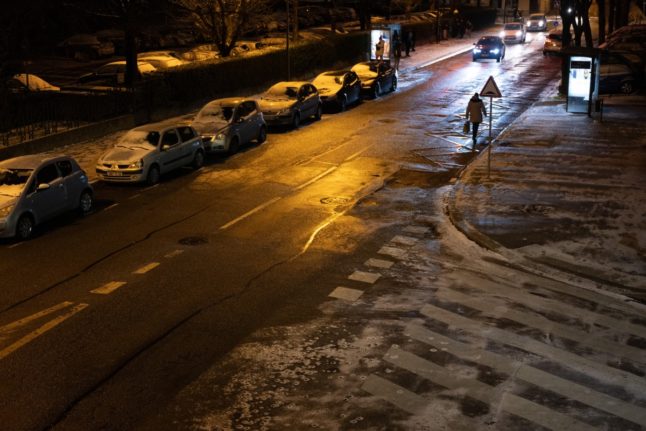Several local authorities in France have unlocked their ‘severe cold’ plans as temperatures plummet.
Paris triggered its plan on Monday, following in the footsteps of a number of prefectures including Meurthe-et-Moselle, Cantal and Haut-Rhin – the latter of which triggered its level 1 plan on Saturday.
This means that prefectures open additional emergency accommodation places in buildings which usually have another use, such as gymnasiums or schools, to provide shelter for those who are most vulnerable to the cold.
Elsewhere, Hauts-de-Seine, Bas-Rhin and Loire-Atlantique were among the départements to have stepped up prevention and vigilance programmes.
What about the rest of the week?
Tuesday, January 9th is set to be the coldest day of the spell, with forecasters now predicting that overnight temperatures in certain higher-altitude parts of the country could fall as low as -15C.
Frosts were widespread across the northern half of the country on Monday, as children headed back to school after the Christmas holidays. Temperatures dipped as low as -4C in Amiens and Lille, -3C in Paris and Belfort, and -2C in Metz and Rouen.
Forecasters warned that temperatures would struggle to get above zero in the north and east of France, while a strong wind would make it feel colder still.
On Tuesday, the cold is expected to take hold across the whole of the country, with a large part of France seeing the mercury dip below freezing overnight and the average daily temperature expected to fall into negative figures for the first time since 2018.
Forecasters predict -5C in Strasbourg, Clermont-Ferrand, Agen and Lille; -4C in Bordeaux; -3C in Dijon, La Rochelle, Montpellier and Toulouse; -2C in Lyon or Brest; even -1C in Perpignan.
In Paris, meanwhile, the mercury is not expected to get any higher than -2C, Météo-France has said, adding that the capital could see temperatures stuck below zero for the remainder of the week.
Locally, Météo-France is forecasting temperatures down to “-10C, even -15C in cold spots. On Tuesday, “we’ll be 5C to 8C below seasonal normals nationwide”.
Conditions are set to remain glacial in the northern half of the country on Wednesday and into Thursday, but clouds in the south mean temperatures will start to rise, with the prospect of snow around the Rhône valley.



 Please whitelist us to continue reading.
Please whitelist us to continue reading.
Member comments